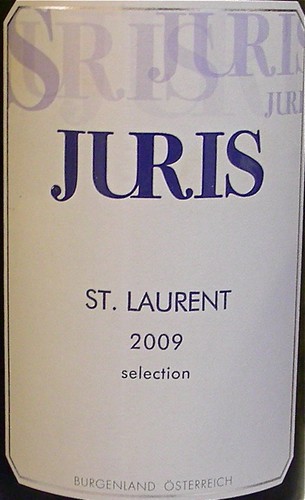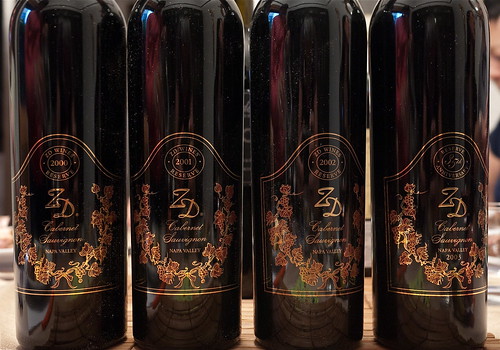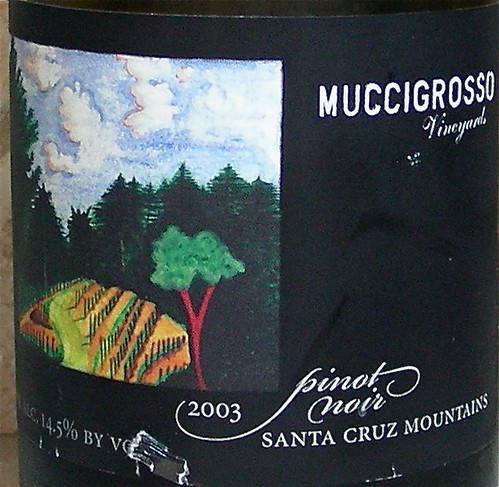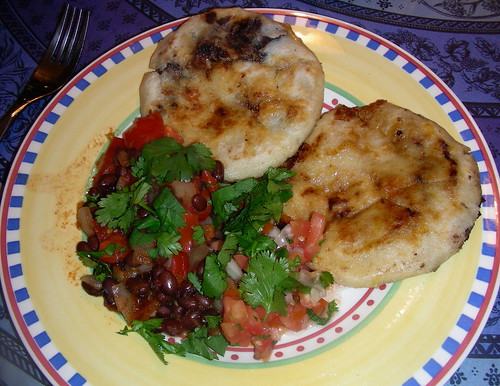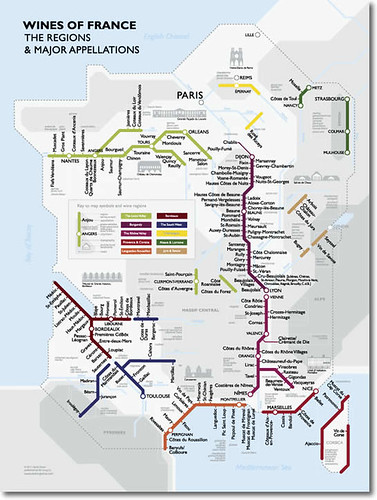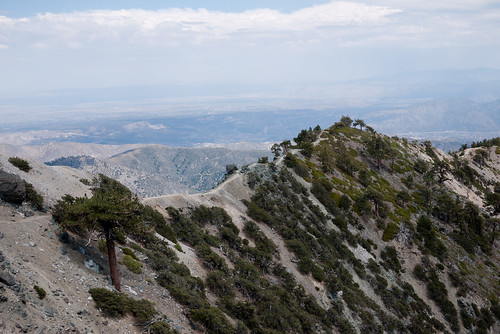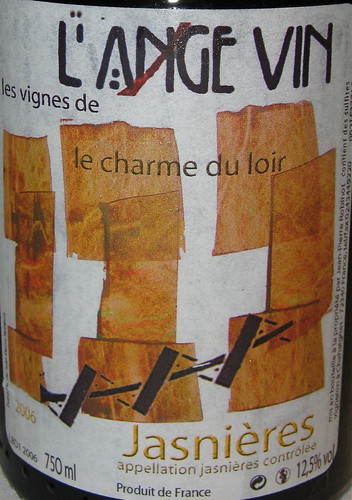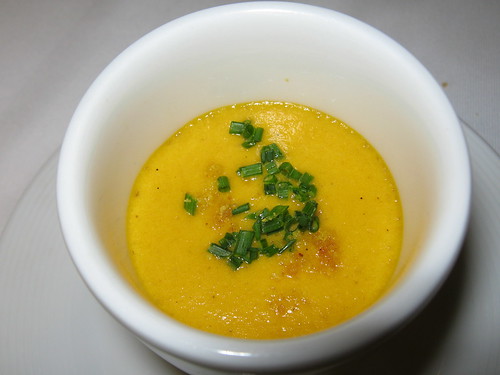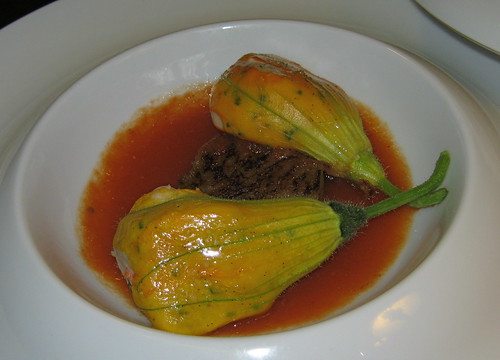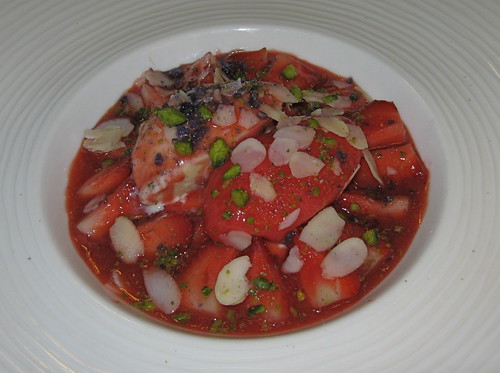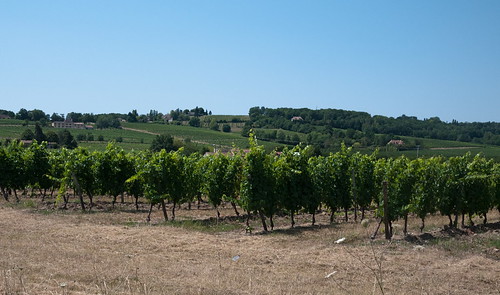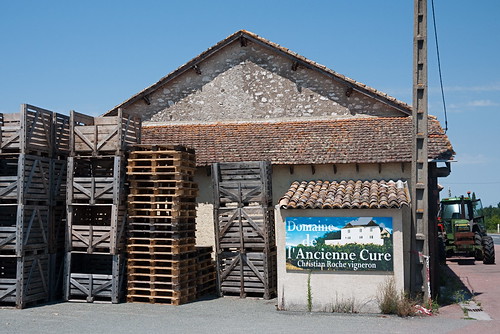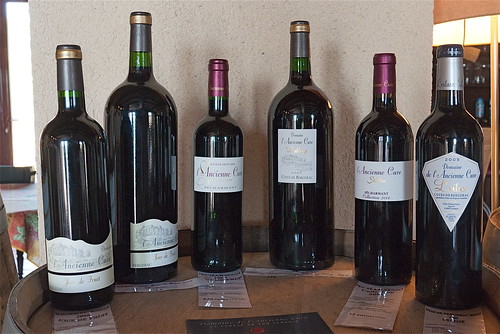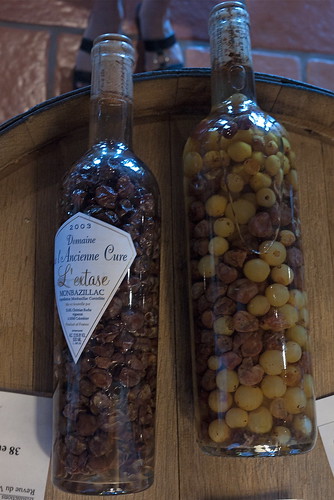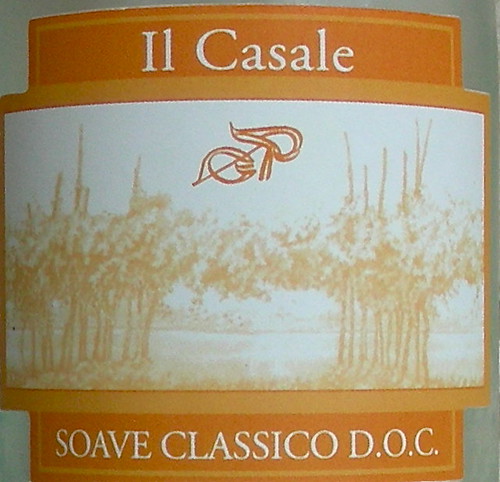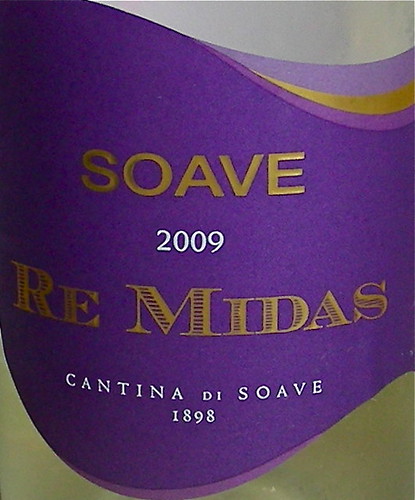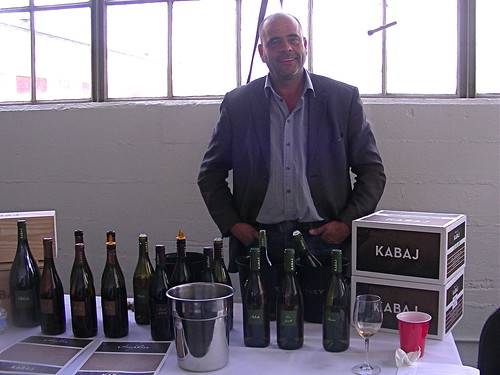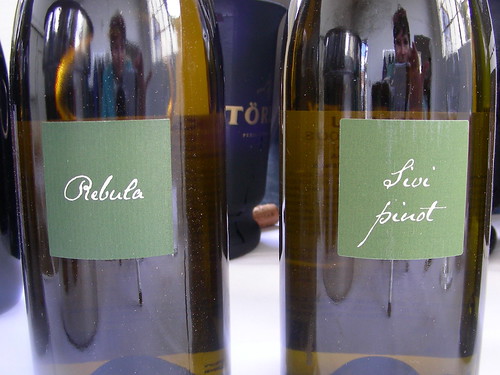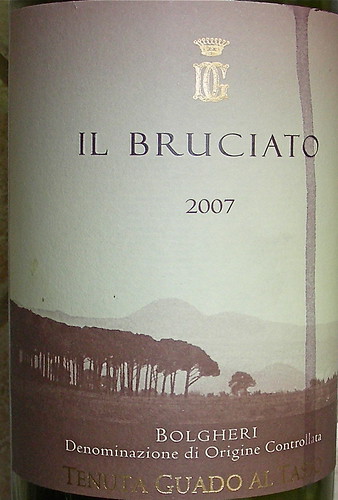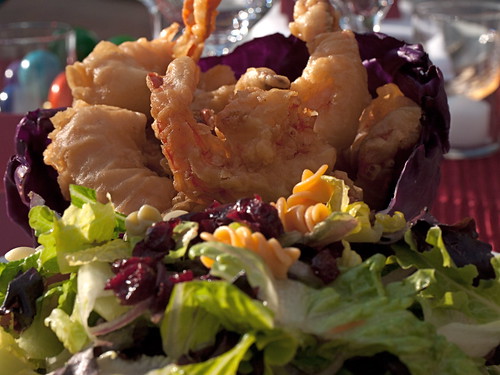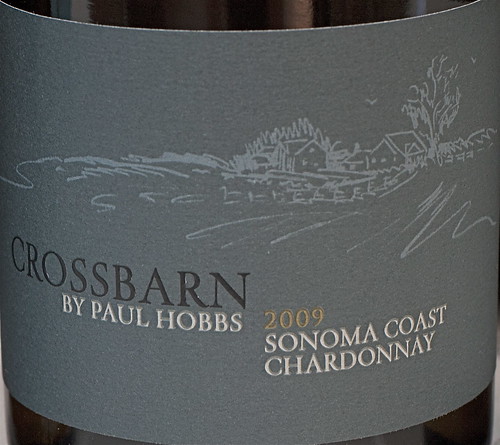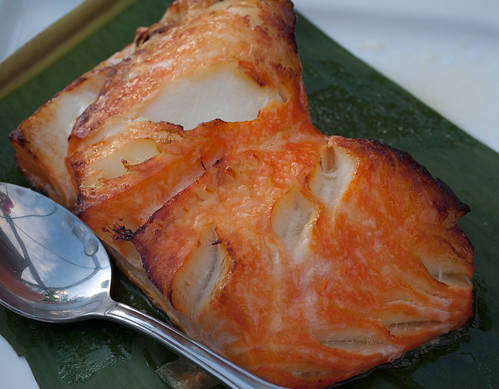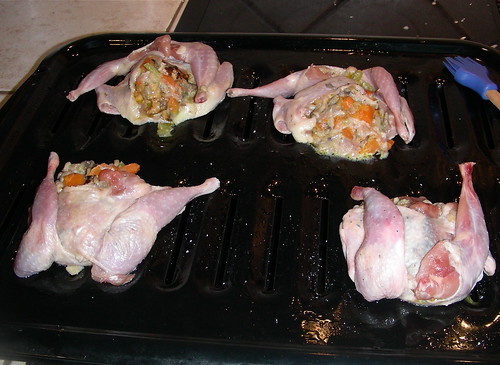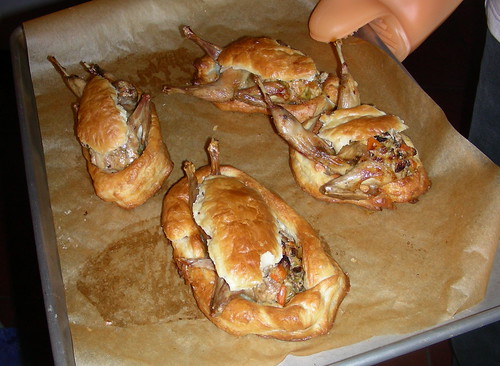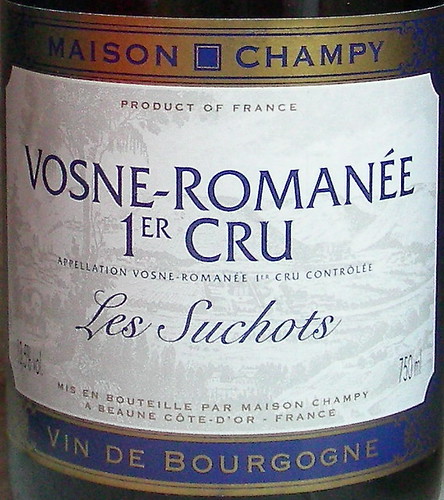The terms
Left Bank and
Right Bank refer to the banks of the Gironde river that flows through Bordeaux into the Atlantic Ocean. The Left Bank includes the Médoc appellation and its sub-appellations (Pauillac, Saint Estèphe, Saint Julien, Margaux etc.). On the Right Bank, we have Pomerol and Saint Emilion surrounded by their lesser-known (and generally less expensive) satellite appellations such as Lussac-Saint-Émilion, Lalande de Pomerol, Fronsac, and Côtes-de-Castillon.
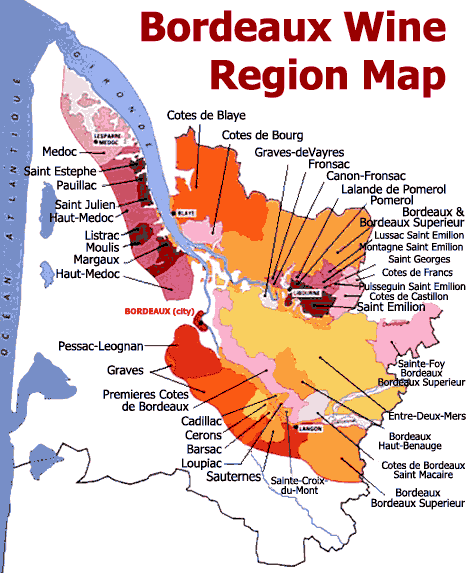
Bordeaux Wine RegionThe left and right banks are quite different in terms of terroir. On the left side of the river, the soil is mostly composed of alluvial gravel deposits. It is well drained and holds the heat well, which makes it ideal for Cabernet Sauvignon. On the right side, the soil contains clay enriched with iron, limestone and sandy gravels, which suits Merlot particularly well. Therefore, Right Bank wines have a much higher percentage of Merlot in their blend, which makes them more fruit forward with less tannins. They are also more approachable when young.
Our latest tasting included Right Bank wines from Lalande de Pomerol, Côtes de Castillon, Fronsac, and Saint Emilion. We also tasted two dry whites. Dry whites from Bordeaux are not as well known as their red counterparts and the region produces only a small quantity of dry whites from blends of Sémillon, Sauvignon Blanc, and Muscadelle. Graves is the most well-known region for producing dry whites and the only one that includes them in its
classification.
Here are the wines that we tasted:
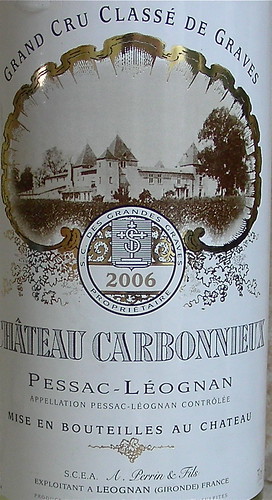
•
2006 Château Carbonnieux Blanc: Located just ten miles from Bordeaux along the Garonne river,
Château Carbonnieux was built in the late 14th Century by the Benedictine monks. It is a Grand Cru Classé in the
Pessac-Léognan appellation producing both red and white wines. The planting is 65% Sauvignon Blanc, 34% Sémillon and 1% Muscadelle for the whites and 60% Cabernet Sauvignon, 30% Merlot, 8% Cabernet Franc, 1% Malbec and 1% Petit Verdot for the reds. My notes: light golden color, nose of lemon and grapefruit, fresh and crisp on the palate, getting more complex with more time in the glass. A big favorite of the evening.
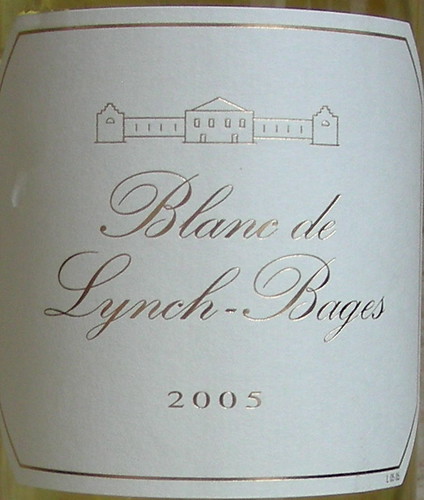
•
2005 Blanc de Lynch-Bages:
Château Lynch-Bages was founded in the late 17th century by Irishman John Lynch. The estate is ranked a fifth grown in the
1855 classification but this only applies to the reds. It is located near the village of Bages, just southwest of Pauillac. The production is mostly red with a planting of 73% Cabernet Sauvignon, 15% Merlot, 10% Cabernet Franc and 2% Petit Verdot. There is also a 4.5 hectare plot planted with white varieties (40% Sémillon, 40% Sauvignon Blanc and 20% Muscadelle) that has been producing a white wine since 1990. My notes: unfortunately, I found one of the bottles oxydized. Light yellow color, stone fruits and honey on the nose, some thickness on the palate but not as good as the Carbonnieux.
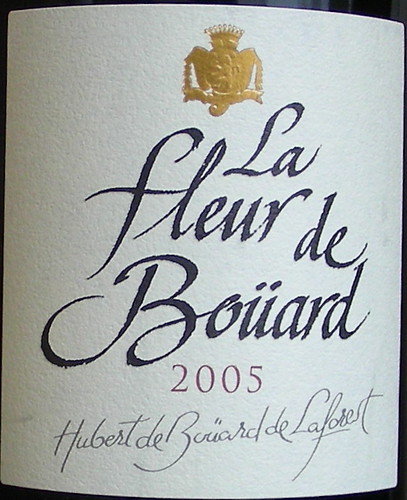
•
2005 Château La Fleur de Boüard:
Château La Fleur de Boüard was founded in 1998 by Hubert de Boüard, co-owner of Château Angélus, 1er Grand Cru Classé of Saint-Emilion. It is located in the
Lalande de Pomerol appellation near the town of Néac, just at the border of the Pomerol appellation. The wine is a blend of 80% Merlot, 15% Cabernet Franc, and 5% Cabernet Sauvignon. It was aged 18 to 24 months in oak barrels, 75% new. My notes: dark color, quite closed on the nose, medium bodied, tannic on the palate, cocoa flavors on the finish. This was our first red and I realized too late that I should have decanted it. I decanted the 4 remaining reds afterwards.

•
2005 Château de la Dauphine: the Dauphine is
Marie-Josèphe de Saxe, daughter of King Augustus III of Poland and wife of dauphin Louis, son of Louis XV. She was also the mother of the last three kings of France, Louis XVI, Louis XVII, and Charles X. She lived in the
Chateau around 1750. The estate has 31 producing hectares in the
Fronsac appellation. The wine is a blend of 90 % Merlot and 10 % Cabernet Franc. My notes: dark color, nose of berries and tart cherries, medium bodied, well balanced, pleasant finish.
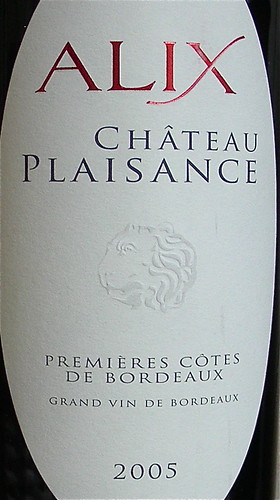
•
2005 Château Plaisance Cuvée Alix:
Château Plaisance is an estate of around 40 hectares that has been run by Philippe Magrez of Grand Cru Classé Château Pape Clément since 2005. The vineyard is planted on a very steep south-facing hillside in the
Premières Côtes de Bordeaux appellation. The soils are made up of white gravel at the top of the hill and red clay and limestone halfway down the slope. The blend is 75% Merlot, 20% Cabernet Sauvignon, 5% Cabernet Franc. My notes: dark red color, gamey nose, round, spicy and meaty on the palate, mineral finish.

•
2005 Château Ferrand Lartigue:
Château Ferrand Lartigue was founded in 1993 by Pierre and Michelle Ferrand. It is a 5 hectare estate classified Grand Cru in the Saint Emilion appellation. The wine is a blend of 85% Merlot and 15% Cabernet Franc. My notes: aromatic nose, earthy and smoky flavors on the palate, firm tannins, tasty.
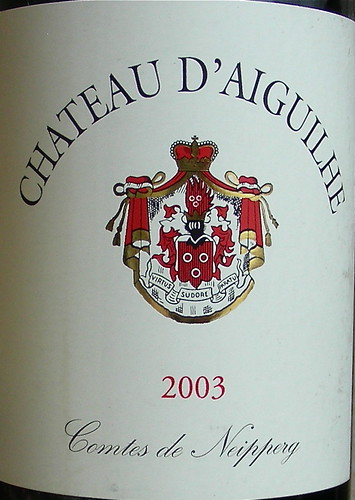
•
2003 Château d'Aiguilhe:
Stephan von Neipperg of Saint-Emilion Grand Cru Classé Château Canon La Gaffelière acquired Château d'Aiguilhe in 1998. The estate is located on hills overlooking the Right Bank of the Dordogne River, on the border between the Côtes de Castillon and Saint-Emilion appellations. The south-facing vineyard lies on the upper part of the hills and has excellent drainage. The blend is 80% Merlot and 20% Cabernet Franc. My notes: deep brick-tinged red color, assertive nose of raspberries and blackberries, still tight on the palate, full-bodied with multi-layered flavors, long finish. The big winner of the evening.
Technorati tags: wine food & drink
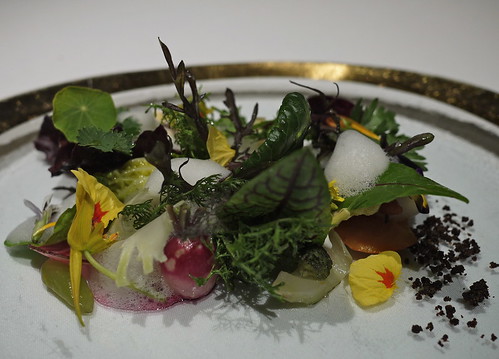
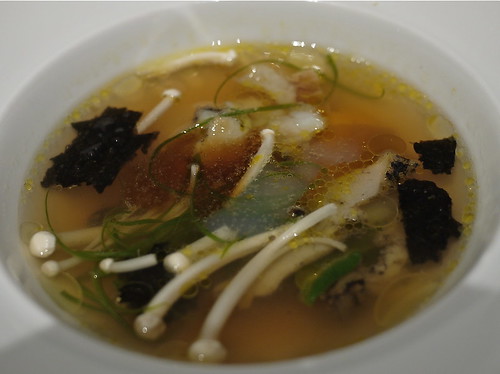
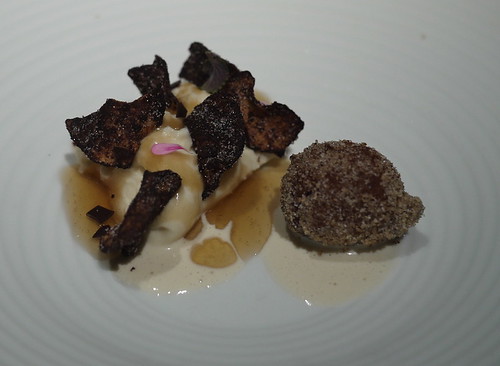
 The wine list has a nice focus on the Santa Cruz Mountains. We chose a 2006 Mount Eden Estate Bottled Pinot Noir from the nearby Mount Eden Vineyards. Located on a 2000 foot peak about 15 miles from the Pacific Ocean, the winery was founded in 1945 by pioneer winemaker Martin Ray who planted his first vineyard of Pinot Noir and Chardonnay there. Today, seven acres of the estate vineyard are planted with Pinot Noir. The wine is fermented using natural yeasts and matures for eighteen months in French oak barrels (75% new). The wine showed a medium red color with fragrant aromas of forest berries, spices and earth on the nose. On the palate it was all about elegance, medium-bodied with a smooth texture and a savory earthy finish that went wonderfully well with David Kinch's alchemy.
The wine list has a nice focus on the Santa Cruz Mountains. We chose a 2006 Mount Eden Estate Bottled Pinot Noir from the nearby Mount Eden Vineyards. Located on a 2000 foot peak about 15 miles from the Pacific Ocean, the winery was founded in 1945 by pioneer winemaker Martin Ray who planted his first vineyard of Pinot Noir and Chardonnay there. Today, seven acres of the estate vineyard are planted with Pinot Noir. The wine is fermented using natural yeasts and matures for eighteen months in French oak barrels (75% new). The wine showed a medium red color with fragrant aromas of forest berries, spices and earth on the nose. On the palate it was all about elegance, medium-bodied with a smooth texture and a savory earthy finish that went wonderfully well with David Kinch's alchemy.